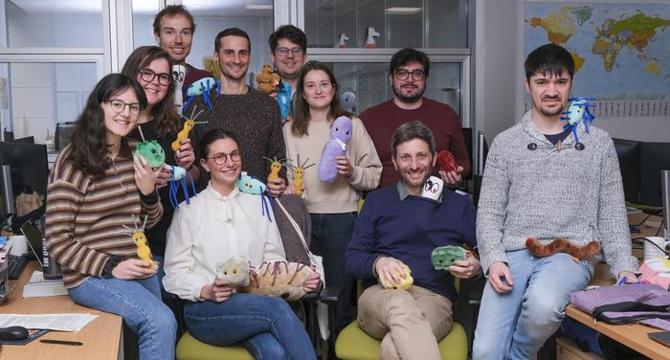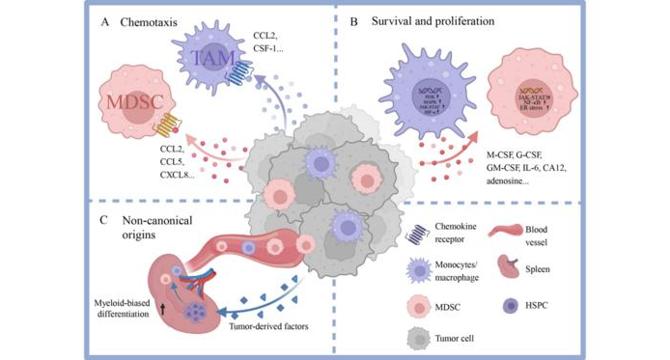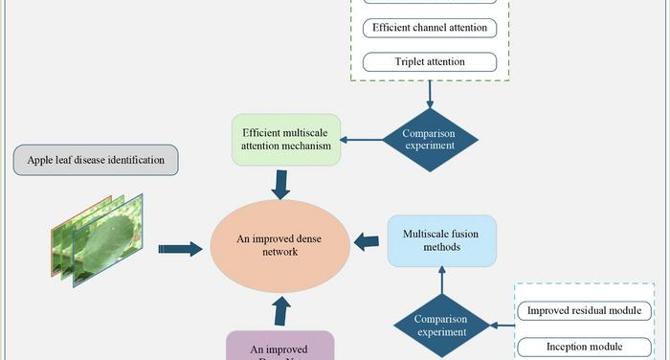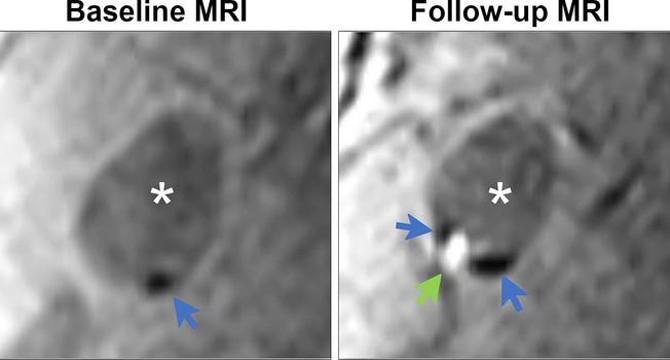Bio News
Bioengineer
300

Image Credit: Bioengineer
Advancing Toward a Diagnostic Test for Colorectal Cancer
- A groundbreaking study reveals a microbial signature linked to colorectal cancer, offering potential for non-invasive diagnostic tools.
- The research, led by Professor Nicola Segata and published in Nature Medicine, analyzed 3,741 stool samples from 18 cohorts globally.
- Identification of a specific set of gut bacteria associated with colorectal cancer may pave the way for transformative diagnostic methods.
- Several bacterial species, including Fusobacterium nucleatum, were found to be consistently elevated in colorectal cancer patients.
- Researchers suggest that these bacteria translocate to the tumor microenvironment and may influence disease development.
- The study utilized metagenomic sequencing and machine learning to achieve high accuracy in predicting colorectal cancer presence and stage.
- Integration of computational science with metagenomic biology marks a shift towards precision diagnostics and personalized screening strategies.
- Clinical translation of these findings faces challenges and requires further validation through registered trials.
- The study's interdisciplinary approach aims to bridge microbiome science with oncology therapeutics for better patient outcomes.
- Understanding the gut microbiome's role in colorectal cancer could lead to novel therapeutic targets and personalized treatments.
Read Full Article
18 Likes
Bioengineer
126

Image Credit: Bioengineer
Myeloid Cells: Central Architects of the Tumor Microenvironment
- Myeloid cells, including TAMs and MDSCs, play crucial roles in the tumor microenvironment, influencing cancer progression and therapeutic resistance through their plasticity and diverse functions.
- TAMs and MDSCs are derived from monocytes and bone marrow progenitors, with contributions from extramedullary hematopoiesis driven by tumor-secreted factors.
- Metabolic reprogramming is essential for myeloid cell functions in the TME, with TAMs utilizing glycolysis, lactate production, and lipid accumulation to modulate immune responses.
- MDSCs impair T cell function through amino acid metabolism, while relying on glutamine and FAO pathways for energy and survival.
- Therapeutic approaches target myeloid cell recruitment, survival, and metabolic dependencies to mitigate their pro-tumoral effects.
- Advancements in single-cell transcriptomics reveal myeloid heterogeneity, with subsets exhibiting distinct roles and responses to therapy based on tumor type and microenvironment.
- Interactions between myeloid cells and other immune/stromal constituents shape complex ecosystems that influence tumor fate and therapeutic responses.
- Reprogramming myeloid function through metabolic interventions and drug repurposing offers promising avenues to enhance anti-tumor immunity.
- Precision immunomodulation targeting myeloid subsets can transform the therapeutic landscape by reversing immune suppression and improving T cell efficacy.
- Understanding myeloid cell biology in oncology paves the way for personalized immunotherapy, emphasizing their pivotal role in fighting cancer.
Read Full Article
7 Likes
Bioengineer
379

Image Credit: Bioengineer
Professor Ari Pouttu Takes the Helm as Director of 6G Research at the University of Oulu, Finland
- Professor Ari Pouttu has been appointed as the new Director of the 6G Flagship program at the University of Oulu in Finland.
- Taking over from Professor Matti Latva-aho, Pouttu's appointment was announced at the EuCNC & 6G Summit in Poznań, Poland.
- The University of Oulu launched the latest edition of its research publication, '6G Waves,' emphasizing the importance of research infrastructures for international collaboration in next-generation mobile communications.
- Pouttu and Latva-aho highlighted the need for extensive real-world testing to ensure reliability and effectiveness in the increasingly complex systems under study.
- The establishment of the 6G Test Centre in Oulu, linked to NATO's DIANA program, provides dual-use research facilities for commercial and military sectors.
- Oulu's test network includes sites like the OuluZone driving range, University Hospital's indoor network, Sodankylä Geophysical Observatory, and the Callio underground laboratory for versatile trials in Arctic conditions.
- The Oulu Test Centre facilitates real-time software and hardware trials, positioning Oulu at the forefront of 6G research and application, driving technological advancements and economic benefits.
- Professor Pouttu's career showcases a commitment to advancing wireless communication systems, focusing on practical applications in areas like healthcare, logistics, and transportation.
- His management of both 5G and 6G R&D initiatives reflects a forward-looking vision to integrate capabilities across different generations in the evolving telecommunications landscape.
- Oulu's collaborative research efforts and industry partnerships are crucial in driving technological advancements and shaping the future of mobile communications and societal transformation.
Read Full Article
22 Likes
Bioengineer
323

Image Credit: Bioengineer
Enhancing Apple Disease Detection Through Multi-Scale Features and Attention Mechanisms
- In the realm of apple cultivation, diseases like rust, powdery mildew, and brown spot pose significant threats to crop yields, necessitating accurate and timely detection to mitigate losses.
- Historically, manual disease diagnosis relying on visual inspection by agronomists has been labor-intensive, time-consuming, and error-prone, prompting the need for automated detection methods.
- The Incept_EMA_DenseNet model, developed by Professor Hui Liu's team, introduces multi-scale feature extraction and an attention mechanism, achieving an accuracy rate of 96.76% in disease recognition.
- By combining detailed texture analysis with a focus on disease-afflicted regions, the model surpasses traditional single-scale approaches by comprehensively capturing disease manifestations.
- The Efficient Multi-scale Attention (EMA) mechanism enhances computational efficiency by highlighting pathological features while reducing complexity and parameters compared to conventional methods.
- Optimized for field use, the model runs efficiently on smartphones, empowering farmers to diagnose diseases on-site using readily available technology.
- Validated on a diverse dataset, Incept_EMA_DenseNet consistently achieved accuracy rates exceeding 94% across various lighting conditions and camera perspectives.
- This technology not only enables precise disease detection but also promotes sustainable agriculture by reducing pesticide use, environmental impact, and economic losses.
- The fusion of multi-scale feature analysis and efficient attention mechanisms exemplifies the potential of AI in revolutionizing crop health monitoring and disease management practices.
- Continued research aims to expand the model's applications beyond apples, integrating real-time monitoring and community-driven data sharing for broad agricultural impact.
- In summary, Professor Hui Liu's study showcases the transformative power of AI-driven plant disease diagnosis, offering a promising path towards enhancing crop health monitoring through technological innovation.
Read Full Article
19 Likes
Discover more
Bioengineer
343

Image Credit: Bioengineer
Comprehensive Immunity Mapping Unveils New Insights into Flu Virus Evolution
- A recent study in the journal eLife has highlighted the impact of individual antibody immunity on influenza virus evolution.
- The study used a high-throughput assay to analyze neutralizing antibody responses against different H3N2 influenza strains.
- Influenza viruses mutate continuously, evading prior immunity and posing global health challenges.
- This research reveals the individualized nature of human immune responses to influenza, shaped by previous infections or vaccinations.
- The innovative neutralization assay developed by the research team combines synthetic virology and next-generation sequencing.
- Individual serum samples showed varying abilities to neutralize viral strains, indicating significant heterogeneity in immunity.
- Strains escaping neutralization by more individuals' sera had higher evolutionary success and prevalence during the season.
- The study emphasizes the importance of individual-level immune profiling for accurate influenza surveillance and vaccine development.
- While the study's design has limitations in sample diversity, it provides valuable insights into the interplay between immunity and viral adaptation.
- This research offers a promising model for understanding how immune histories influence influenza virus evolution and guiding improved public health strategies.
Read Full Article
20 Likes
Bioengineer
142

Image Credit: Bioengineer
Predictive Approach to Whole-Brain Dynamics: Implications for Understanding Mental Disorders
- Global health is significantly impacted by neuropsychiatric disorders, yet diagnostic frameworks often lack objective measures of brain function.
- Researchers from Xi’an Jiaotong University introduce a novel approach using the Landau-Stuart oscillator model to simulate brain dynamics, enhancing neuroimaging biomarker discovery.
- Individual-level adaptability is crucial in modeling brain dynamics, with the research team employing personalized initialization strategies for improved accuracy.
- Advanced gradient adjustment mechanisms and approximate loss functions enhance the model's robustness and convergence, revolutionizing neuroimaging research.
- The LS oscillator model demonstrates the ability to generalize across subjects and accurately reconstruct individual-level brain dynamics, showing promise for neuropsychiatric disorder diagnostics.
- By estimating bifurcation parameters, the model excels in representing resting-state BOLD characteristics and outperforms traditional methods in classification accuracy.
- Regional analyses reveal significant differences in key brain areas related to emotional and cognitive processes, indicating potential biomarkers for diagnostic assessments.
- Future research aims to refine the model by integrating structural connectomics and graph neural networks to deepen our understanding of brain dynamics and enhance predictive accuracy.
- Incorporating these methodologies could lead to personalized neuromodulation strategies, revolutionizing clinical diagnostics and treatment for neuropsychiatric disorders.
- The shift towards objective, quantifiable diagnostics informed by advanced modeling techniques could transform mental health care, improving patient outcomes and reducing stigma.
Read Full Article
8 Likes
Bioengineer
252

Image Credit: Bioengineer
Exploring the Diverse Roles of B Cells in Tumor Development
- B cells play diverse roles in the tumor microenvironment, impacting cancer progression through both anti-tumor immune responses and pro-tumor mechanisms.
- They generate antibodies against tumor-associated antigens, promoting complement-dependent cytotoxicity and other mechanisms for tumor cell destruction.
- B cells also function as critical antigen-presenting cells, facilitating immune activation and T cell infiltration within the tumor microenvironment.
- However, regulatory B cells can foster an immunosuppressive niche, inhibiting immune responses and promoting tumor progression through various mechanisms.
- Intratumoral B cells exhibit remarkable heterogeneity, with different subsets impacting cancer progression in tissue-specific ways.
- Therapeutic strategies aim to leverage B cells' anti-tumor potential while addressing their dual roles, utilizing immune checkpoint inhibitors and monoclonal antibodies.
- Innovations in monoclonal antibody engineering and adjuvant therapies show promise in enhancing B cell responses for tumor eradication.
- Challenges in B cell-targeted cancer immunotherapy include identifying effective subsets, understanding molecular signaling, and balancing immune activation with tolerance.
- Combinatorial treatments integrating B cell-targeted therapies with other approaches hold potential for synergistic anti-tumor effects.
- Overall, understanding the intricate functions of B cells in the tumor microenvironment is crucial for developing personalized and effective cancer immunotherapies.
Read Full Article
15 Likes
Bioengineer
288

Image Credit: Bioengineer
Major Demonstration Advances Quaise Energy’s Mission to Power the World with Clean, Renewable Geothermal Energy
- Quaise Energy has successfully demonstrated its millimeter-wave drilling technology on a full-scale oil rig near Houston, marking a major milestone in advancing geothermal energy.
- The company aims to harness the Earth’s geothermal heat, which experts believe could outperform all other energy sources combined.
- CEO Carlos Araque highlights the vast potential of geothermal energy, surpassing fossil fuels, nuclear power, and other renewables.
- Quaise targets the supercritical zone, where water becomes a highly efficient energy carrier, revolutionizing heat transfer and power generation.
- Their innovative approach employs millimeter waves to melt and vaporize rock layers, overcoming traditional drilling limitations in deep geothermal exploration.
- The recent successful demonstration at an oil rig involved extending a borehole with a millimeter-wave drill, proving the technology’s scalability under operational conditions.
- Future plans include deploying a one-megawatt gyrotron for deeper drilling and higher throughput, advancing towards commercial superdeep geothermal energy production.
- Quaise's strategy involves tiered site development worldwide, ranging from accessible superhot rock to supercritical zones that could supply clean power to a significant portion of the global population.
- Collaborations with academic and industry partners enhance understanding of extreme geothermal environments, contributing to the design of resilient geothermal power plants.
- With a seasoned team and a pragmatic yet ambitious vision, Quaise Energy's breakthrough in millimeter-wave drilling signifies a transformative path towards sustainable, limitless geothermal power.
Read Full Article
17 Likes
Bioengineer
264

Image Credit: Bioengineer
Harvesting Revolutionized: New Robot Picks Fruit with a Simple Wave
- In the realm of agricultural technology, automating fruit harvesting has posed challenges due to labor intensity and cost inefficiencies in orchard management.
- A collaborative fruit harvesting system developed at Southwest University uses motion-sensing tech to allow operators control over robotic arms through intuitive hand gestures.
- The system emphasizes a 'human-machine division of labor,' leveraging human visual perception while robots execute physical tasks.
- The robotic arm's precision was improved using a 'four-step screening method' to ensure smooth and efficient movements.
- A unique feature is the integration of Leap Motion controller for gesture sensing, offering submillimeter spatial resolution and filtering algorithms for noise reduction.
- The intuitive control design maps human gestures in a virtual space to the robotic arm's operational zone, resembling motion-controlled gaming for ease of use.
- Operational tests showed reduced fruit picking times with high accuracy, showcasing enhanced efficiency and safety, especially in challenging environments.
- The system's approach focuses on human-robot synergy, augmenting operator expertise with robotic stability to optimize harvesting workflows.
- By lowering technical barriers, enabling modular designs, and increasing adaptability, the technology aims to democratize automated harvesting solutions for broader agricultural use.
- The fusion of human intuition and robotic consistency signifies a shift towards cooperative robots that amplify human capabilities in agricultural automation.
Read Full Article
15 Likes
Bioengineer
47

Image Credit: Bioengineer
Carotid Plaque: A Growing Threat to Vascular Health Over Time
- A study using serial MRI imaging reveals insights into the evolution of carotid artery plaques over time, challenging the notion of calcified plaques being stable.
- Calcification in carotid plaques was traditionally seen as stable; however, new evidence suggests they may be prone to complications like intraplaque hemorrhage.
- The study by Dr. Daniel Bos and team involved 802 asymptomatic participants, demonstrating an increase in plaque complexity over six years.
- Plaques with calcifications had a higher risk of developing intraplaque hemorrhage, leading to increased vulnerability to stroke.
- The research indicates that early identification and surveillance of carotid atherosclerosis are crucial, even in the absence of symptoms.
- Computational simulations project that many with mono-component plaques will progress to complex plaques by age 70, emphasizing the need for proactive monitoring.
- Understanding how calcification influences plaque destabilization through mechanical stress on neovessels is essential for targeted therapies.
- Clinical implications include the importance of monitoring plaque composition evolution through advanced MRI and managing cardiovascular risk factors.
- The study calls for increased clinical awareness to reduce stroke incidence related to plaque rupture, urging comprehensive risk management strategies.
- Further research avenues may explore biochemical signals triggered by plaque constituents and assess therapeutic interventions on plaque evolution and outcomes.
Read Full Article
2 Likes
Sciencedaily
237
Image Credit: Sciencedaily
DNA floating in the air tracks wildlife, viruses -- even drugs
- A study has found that DNA extracted from the air can track wildlife, viruses, and even drugs like cannabis and magic mushrooms in Dublin.
- Researchers have developed methods to analyze environmental DNA (eDNA) from air samples, enabling the study of various species without direct contact.
- The eDNA analysis has shown potential in detecting human pathogens, tracking endangered species like bobcats, and identifying the origin of wildlife for conservation efforts.
- The technology allows for quick and efficient processing of DNA from different species, presenting new possibilities for environmental studies and highlighting the need for ethical considerations in handling genetic data.
Read Full Article
14 Likes
Bioengineer
55

Image Credit: Bioengineer
Hybrid Physics-Based and Statistical Seismic Hazard Analysis
- A new innovative probabilistic seismic hazard analysis method has been introduced by Ba, Zhao, Zhang, and collaborators, combining physics-based simulations with traditional Ground Motion Prediction Equations (GMPEs) for improved earthquake risk assessment.
- The hybrid approach integrates the robustness of GMPEs with the physical realism of physics-based earthquake simulations, creating a comprehensive hazard assessment model that offers enhanced accuracy and reliability.
- Physics-based simulations model seismic wave propagation through geological media, capturing earthquake rupture dynamics and interactions with Earth's crustal structures to provide detailed ground motion predictions for diverse scenarios.
- The methodology integrates deterministic outputs from physics-based simulations with the probabilistic nature of GMPEs, combining sensitivity to seismic dynamics and local geology with statistically grounded estimates of seismic shaking.
- Rigorously representing uncertainty, the hybrid model utilizes Monte Carlo simulations and advanced statistical frameworks to propagate uncertainties from seismic source parameters, wave propagation variabilities, and GMPE inputs.
- The research addresses scalability challenges by optimizing numerical algorithms and leveraging high-performance computing infrastructures, enabling efficient simulation of thousands of earthquake scenarios for regional hazard assessments.
- The integrated seismic hazard analysis method offers practical implications for urban planners, engineers, and policymakers, aiding in designing earthquake-resilient infrastructure, refining building codes, insurance models, and emergency preparedness programs.
- The methodology contributes to fundamental seismology by providing critical insights into rupture propagation, wave path effects, and site responses, enhancing our understanding of earthquake processes.
- With its versatility across diverse tectonic settings, the hybrid model demonstrates potential as a global seismic hazard assessment tool, offering tailored evaluations for regions with varied seismic profiles.
- The interdisciplinary collaboration in this research enhances predictive capacity by integrating data-driven and physics-based perspectives, marking a significant advancement in probabilistic seismic hazard analysis.
- Validation procedures affirm the model's accuracy and superior performance over conventional approaches, boosting stakeholders' confidence in its adoption for practical applications, potentially enabling real-time dynamic hazard assessments.
Read Full Article
3 Likes
Bioengineer
367

Image Credit: Bioengineer
Enhancing the Diversity of Synthetic Binding Proteins Through a Deep Learning Framework: Introducing ProteinMPNN
- Protein engineering faces challenges due to limitations of traditional methods like site-directed mutagenesis and directed evolution, hindering the exploration of therapeutic options beyond existing proteins.
- The advent of deep learning-based frameworks, such as ProteinMPNN, has revolutionized protein design by expanding sequence space for synthetic binding proteins (SBPs).
- ProteinMPNN utilizes machine learning for stability and folding predictions, offering potential advancements over energy function-based approaches.
- Research led by Dr. Weiwei Xue successfully utilized ProteinMPNN, resulting in SBPs with enhanced properties like solubility and stability, outperforming conventional techniques.
- Bioinformatics analysis revealed that ProteinMPNN-derived sequences showed improved properties compared to original SBPs, showcasing the framework's effectiveness.
- The study identified eight scaffolds with enhanced solubility and stability, crucial for synthetic binding protein functionality, offering opportunities for addressing clinical challenges like targeted drug delivery.
- The integration of deep learning into protein design through ProteinMPNN could lead to personalized therapies by uncovering patterns inaccessible to traditional methods.
- The research signifies a unique interdisciplinary collaboration between deep learning and molecular biology, advancing solutions for complex biological challenges.
- ProteinMPNN's potential impact extends to developing personalized treatments for diseases like cancer and autoimmune disorders, overcoming resistance to conventional therapies.
- Future studies will focus on refining predictive models and expanding datasets to improve accuracy and applicability, ushering in advancements in protein design and therapeutic development.
Read Full Article
22 Likes
Bioengineer
202

Image Credit: Bioengineer
HSV-1 Evades APOBEC1 Immunity Using Uracil Glycosylase
- A recent study delves into how HSV-1 evades APOBEC1 immunity in the central nervous system.
- APOBEC proteins like APOBEC1 play a crucial role in restricting viral replication through DNA editing.
- HSV-1 employs a uracil-DNA glycosylase enzyme to evade APOBEC1-mediated immune defenses and sustain viral survival.
- Phosphorylation of HSV-1 UNG is essential for its immune evasion functions by countering APOBEC1-mediated DNA editing.
- Mutating UNG phosphorylation sites leads to increased susceptibility of HSV-1 to APOBEC1, impairing replication within the CNS.
- Host Apobec1 expression influences disease outcomes, highlighting APOBEC1 as a protective factor.
- Inhibiting viral UNG function using a UNG inhibitor shows promise in mitigating HSV-1 encephalitis severity.
- Insights from the study offer potential therapeutic strategies targeting viral DNA repair mechanisms to combat HSV-1 infections.
- The research enhances understanding of viral-host interactions in the CNS and may inspire novel antiviral approaches.
- This study sheds light on the complex dynamics of viral immune evasion and provides avenues for future investigations for HSV-1 treatment.
Read Full Article
12 Likes
Bioengineer
75

Image Credit: Bioengineer
Hybrid Automated Process Enhances Cost-Efficiency in Quantum Cascade Laser Module Production
- Resonantly tunable quantum cascade lasers (QCLs) are vital for mid-infrared (MIR) spectroscopy due to their brilliance and wavelength tunability, catering to applications in chemical analysis.
- Fraunhofer IAF has pioneered a semi-automated assembly process integrating MOEMS with QCL modules to enhance efficiency and reduce production costs.
- The MOEMS-EC-QCL technology enables the combination of multiple laser modules for continuous spectral coverage and high wavenumber scanning speeds.
- The scalable multi-core system offers broad-range spectral acquisition abilities, revolutionizing traditional MIR laser systems for advanced sensing applications.
- The technology propels Fourier-transform infrared (FTIR) spectroscopy techniques through high brilliance and spectral agility, meeting industrial demands for speed and precision.
- The semi-automated process accelerates production rates, ensures quality consistency, and reduces labor costs in assembling MOEMS-EC-QCL modules.
- Applications of MOEMS-EC-QCL laser systems range from semiconductor manufacturing to chemical analytics and security technologies, enhancing efficiency and safety measures.
- The technology's rapid spectral acquisition capabilities facilitate advancements in biomedical diagnostics, environmental sensing, and point-of-interest spectroscopy.
- Fraunhofer IAF's multi-core laser system showcases the technology's readiness for diverse measurement methods, demonstrating its adaptability and scalability.
- The MOEMS-EC-QCL modules offer unprecedented tunability, spectral scanning speed, and optical power in compact formats, ushering in new possibilities for MIR spectroscopy applications.
Read Full Article
4 Likes
For uninterrupted reading, download the app